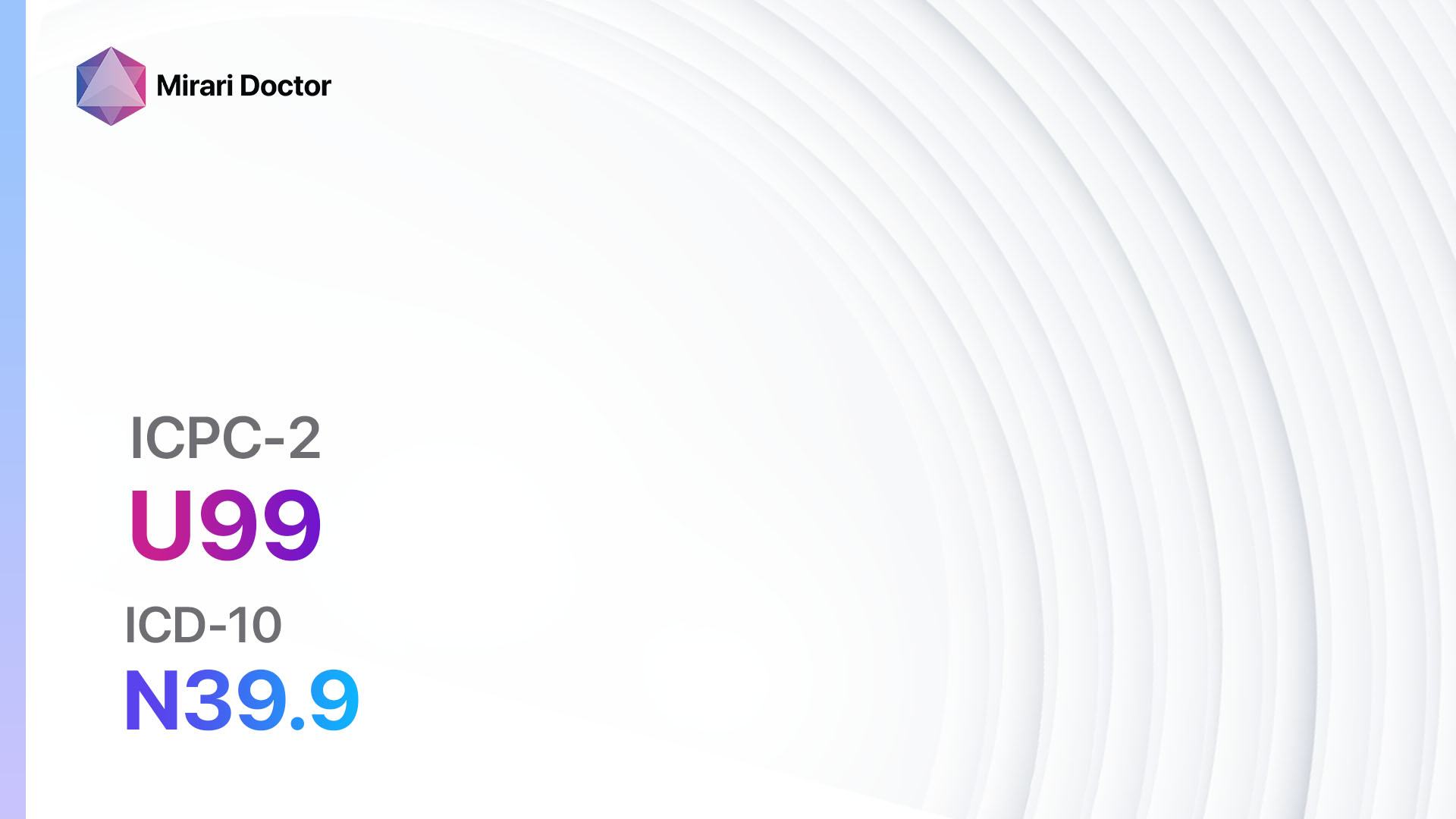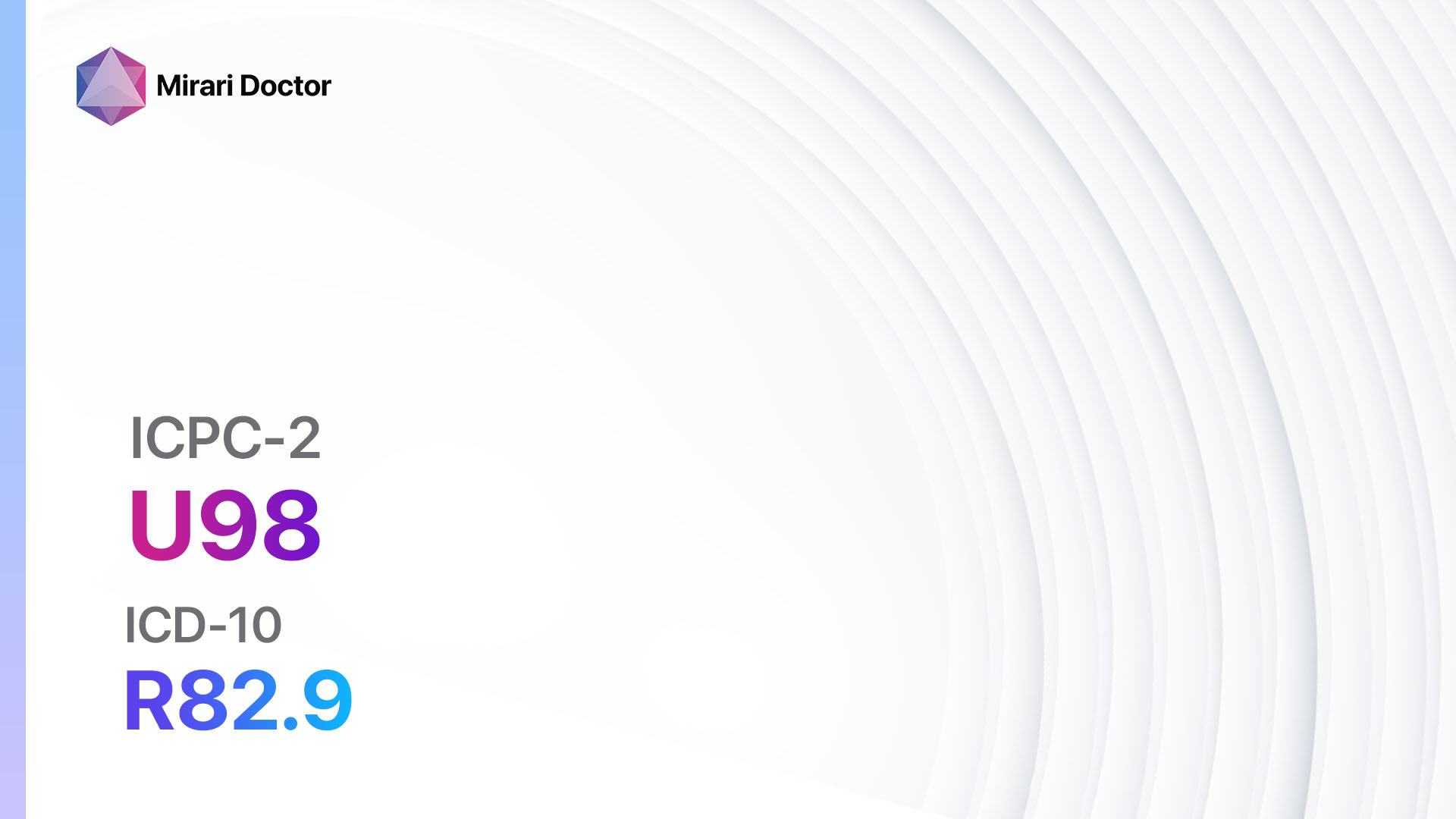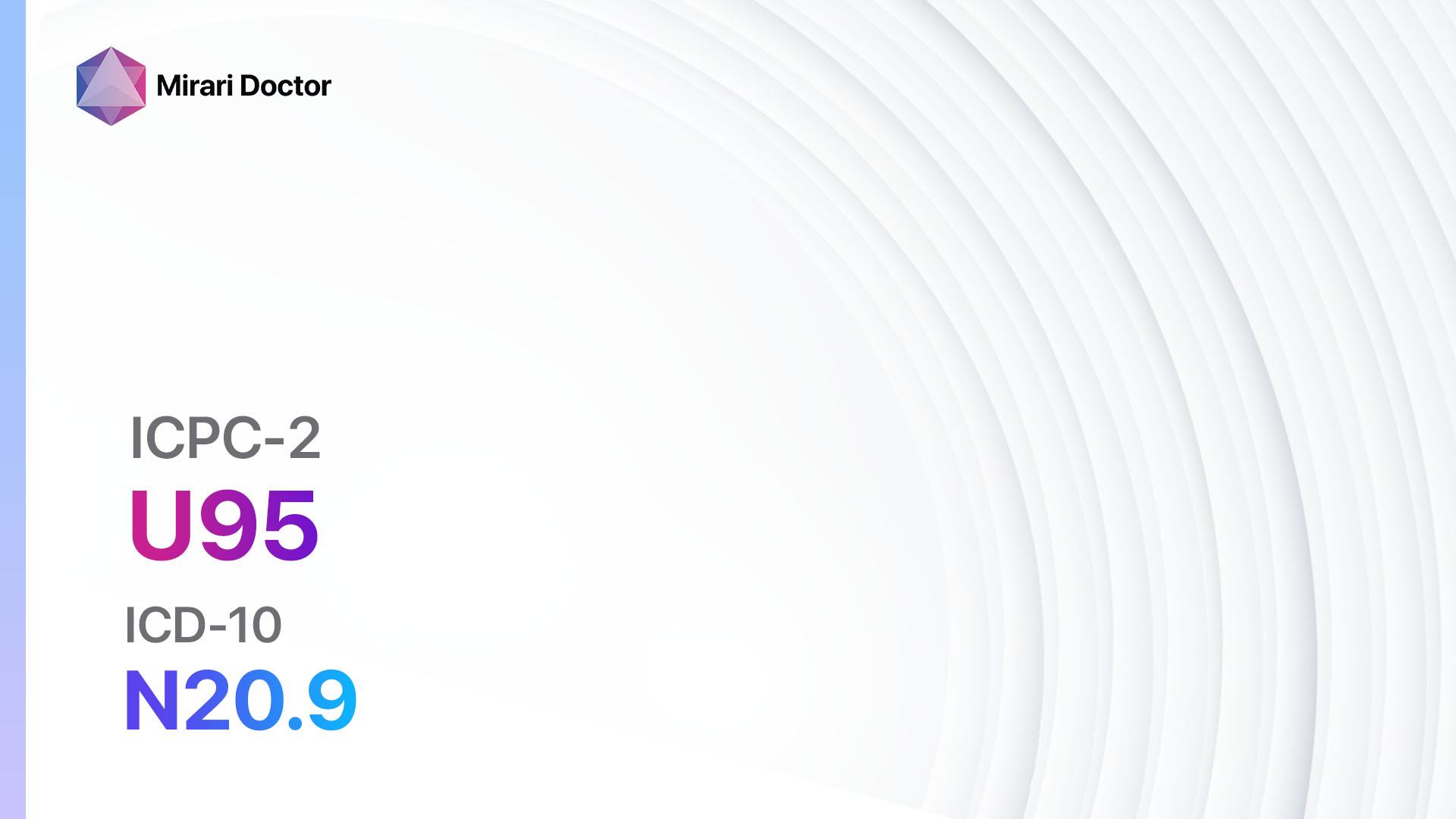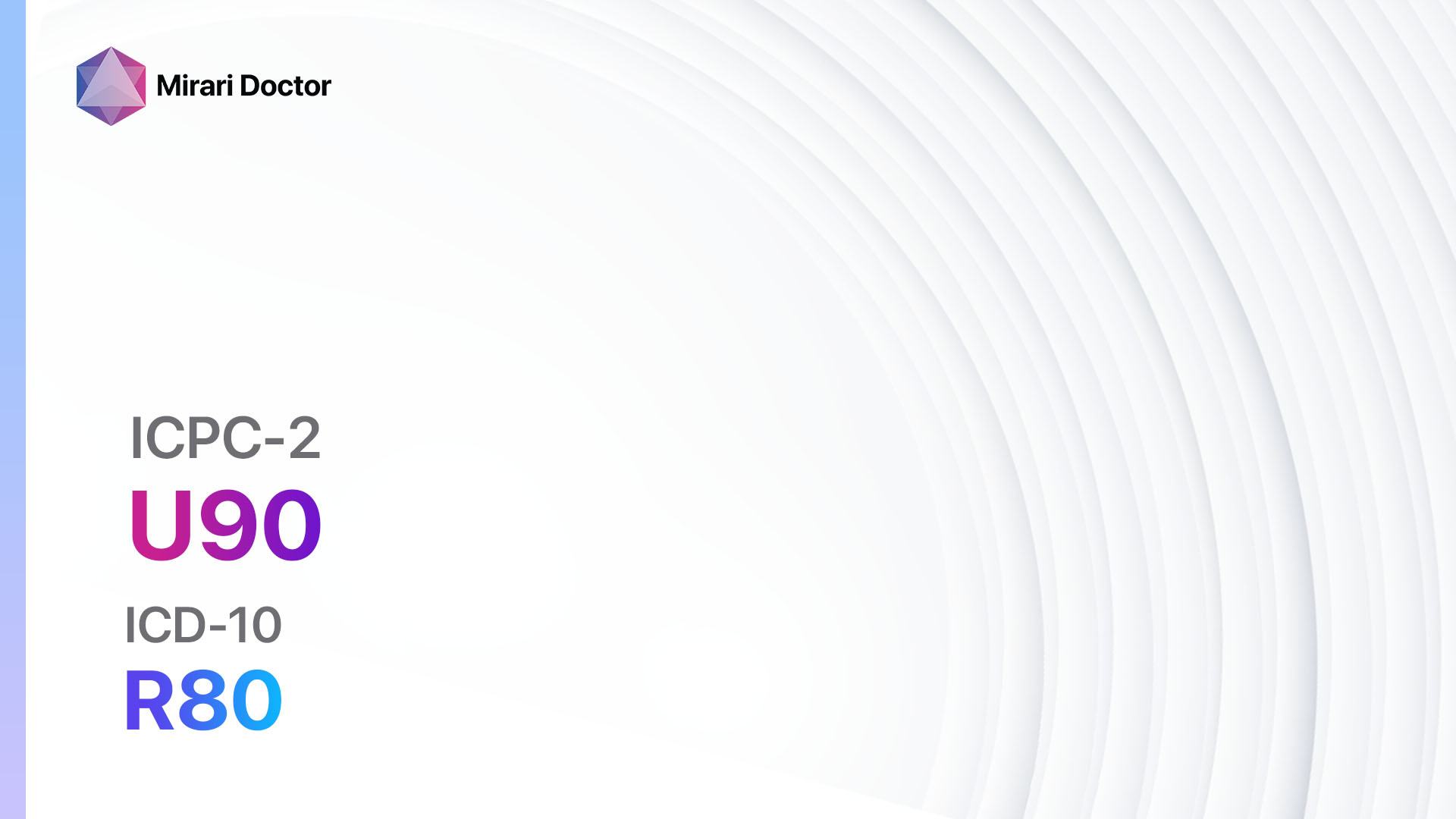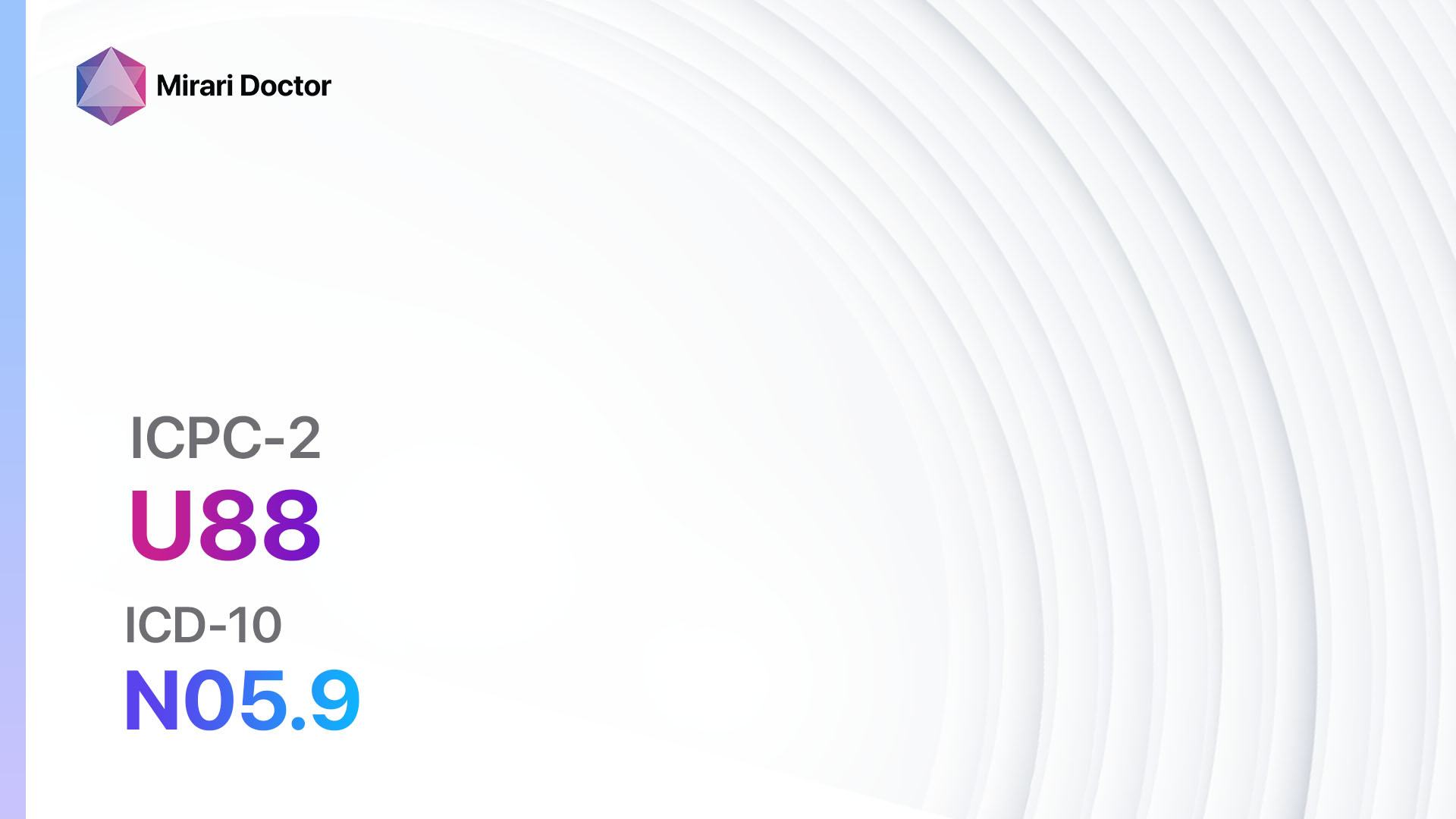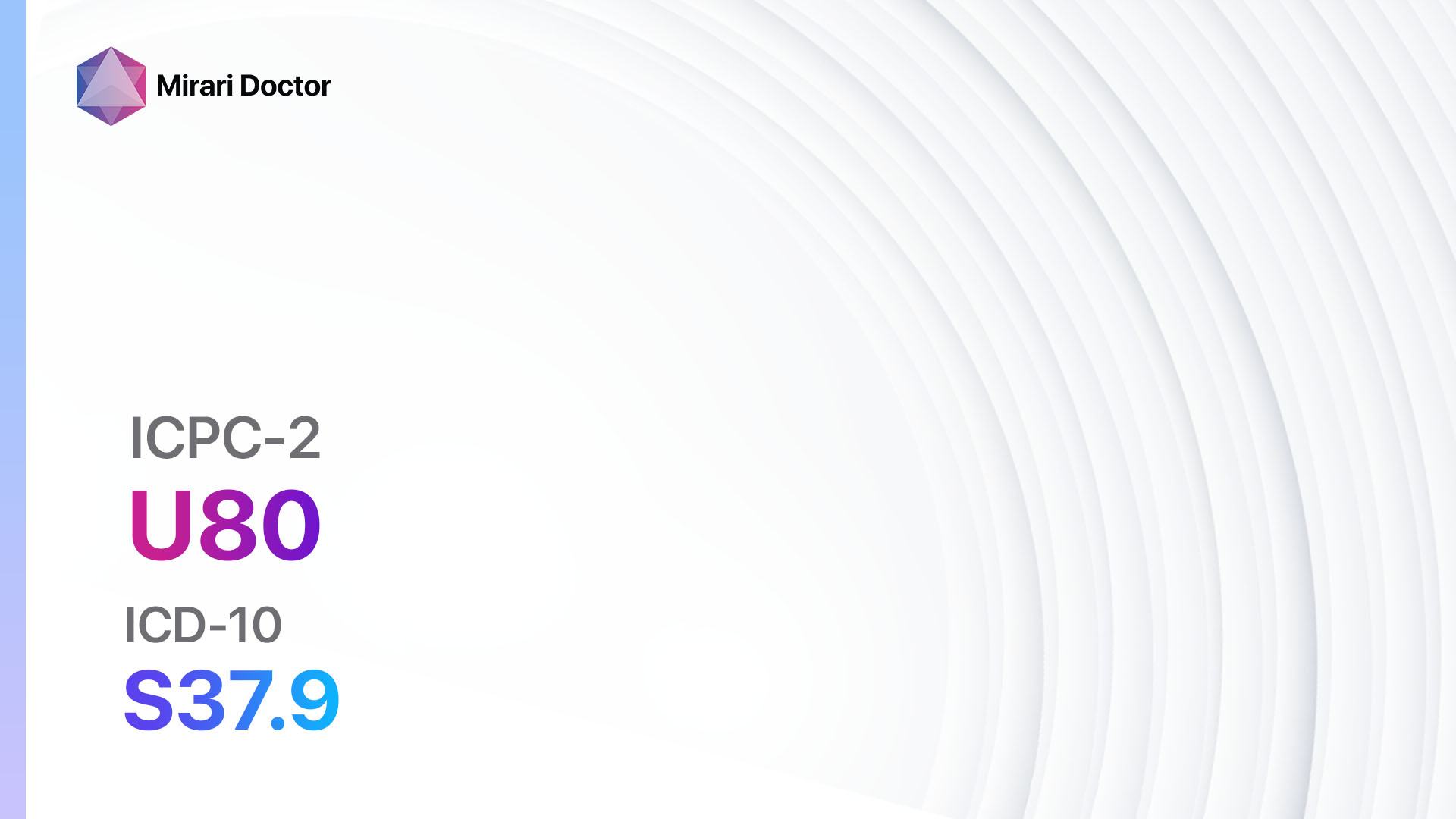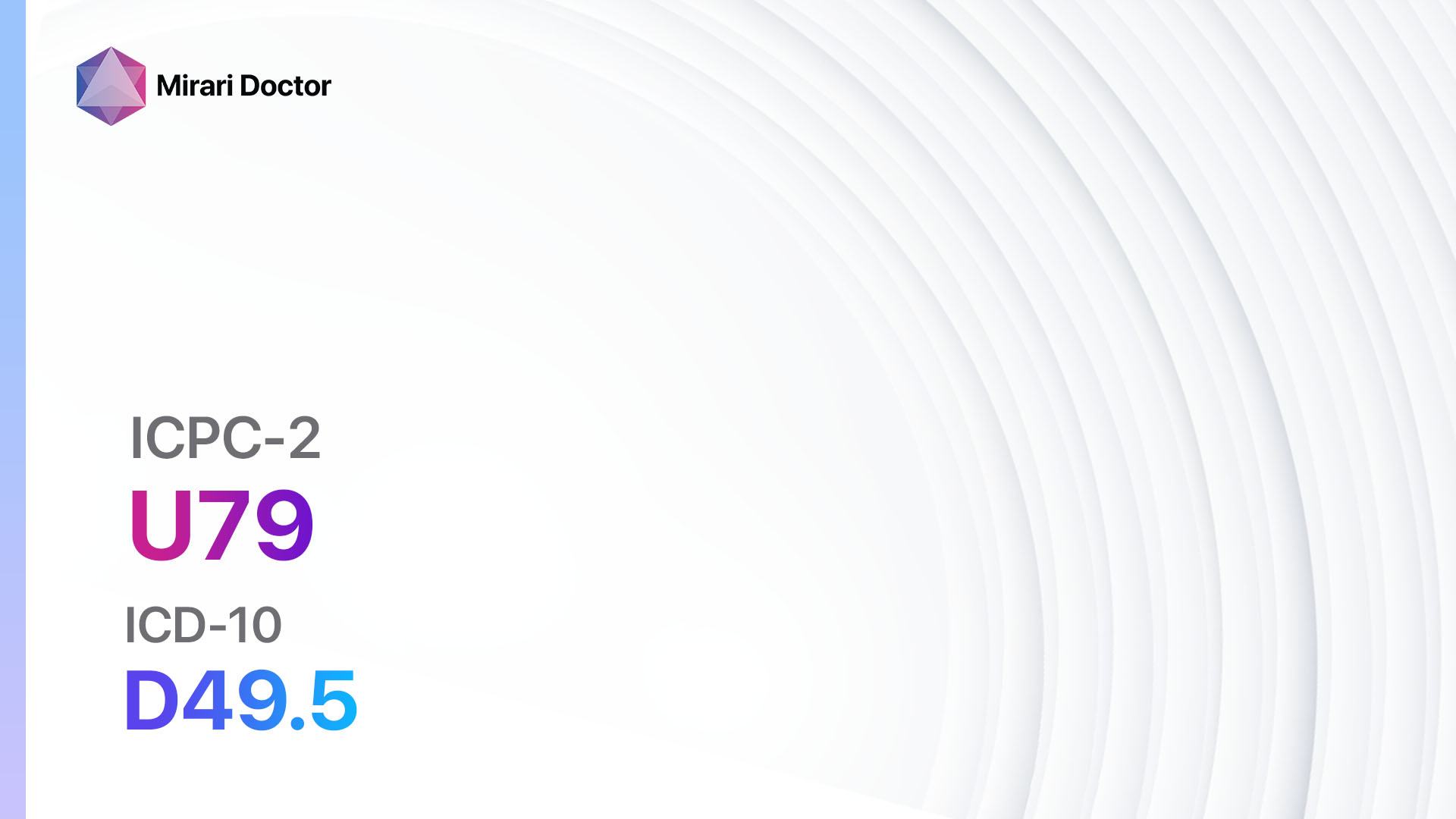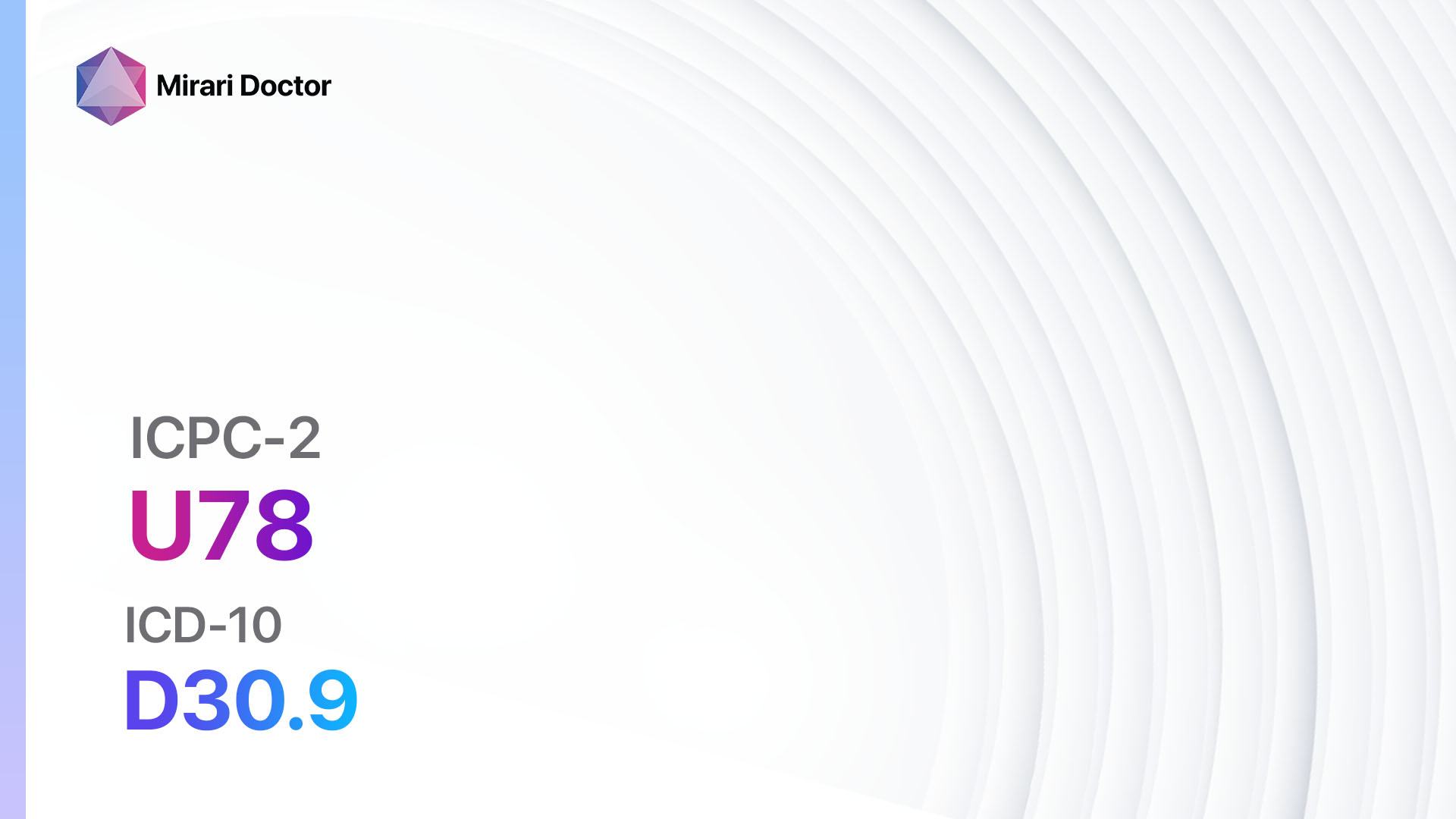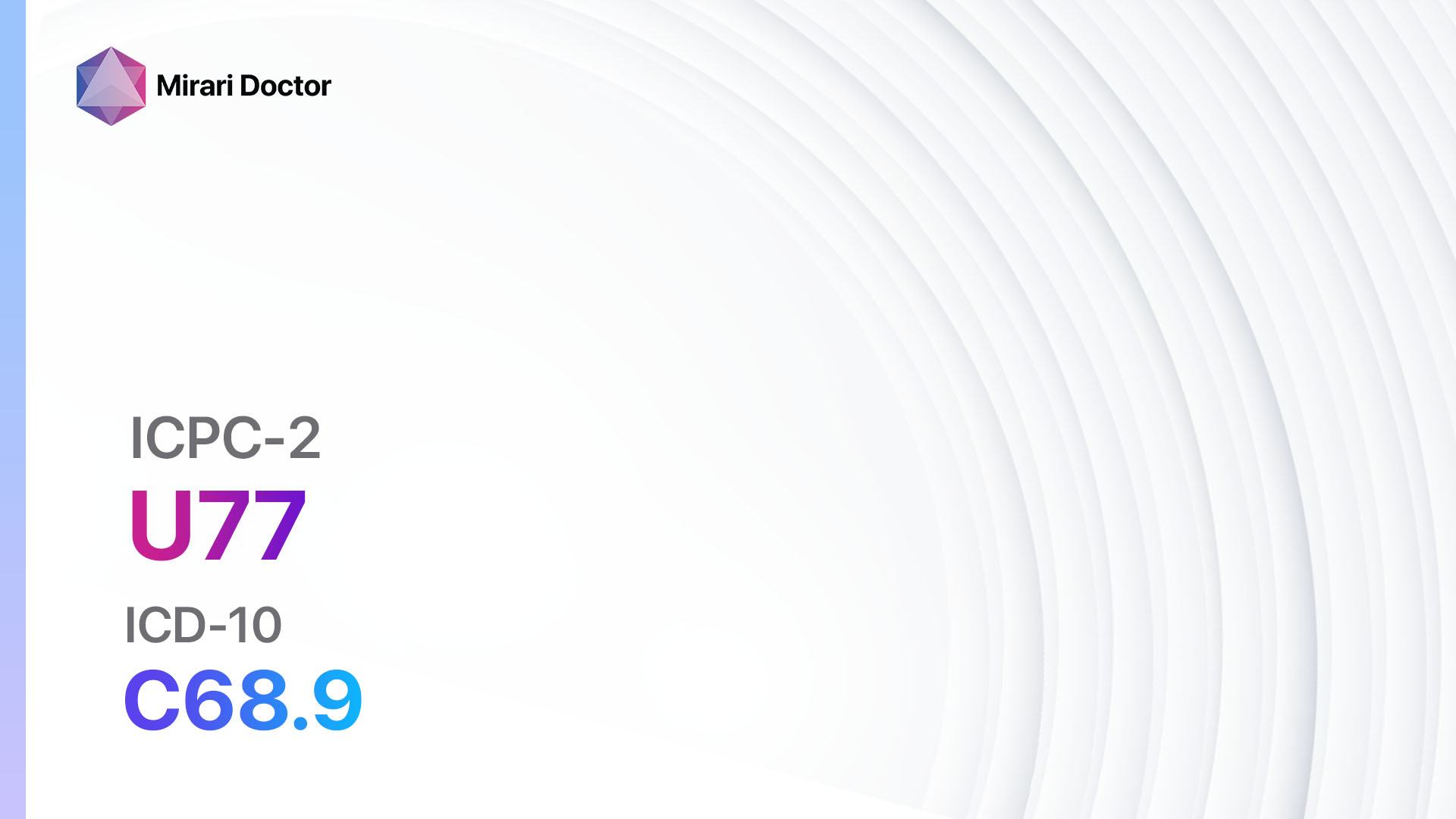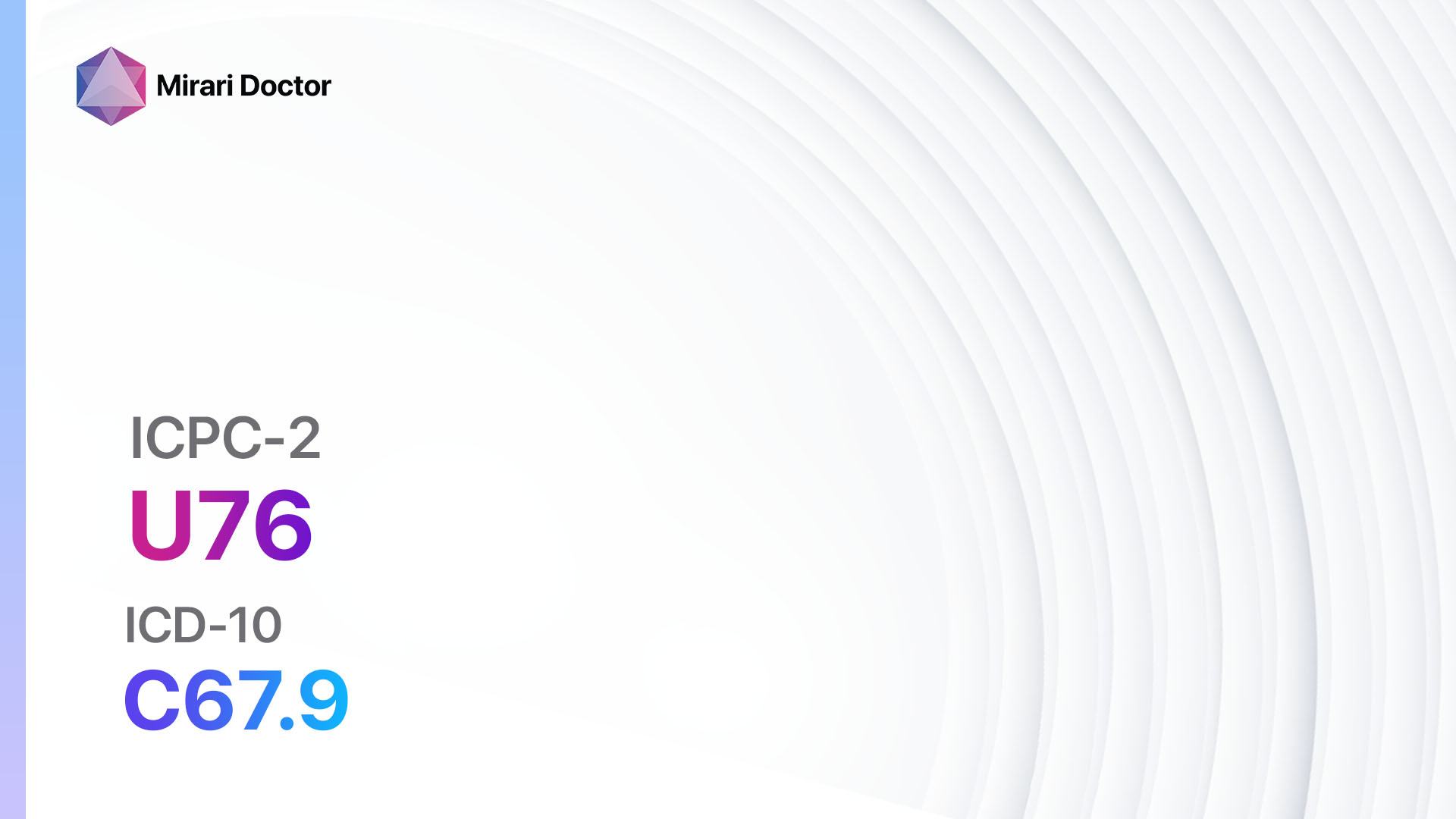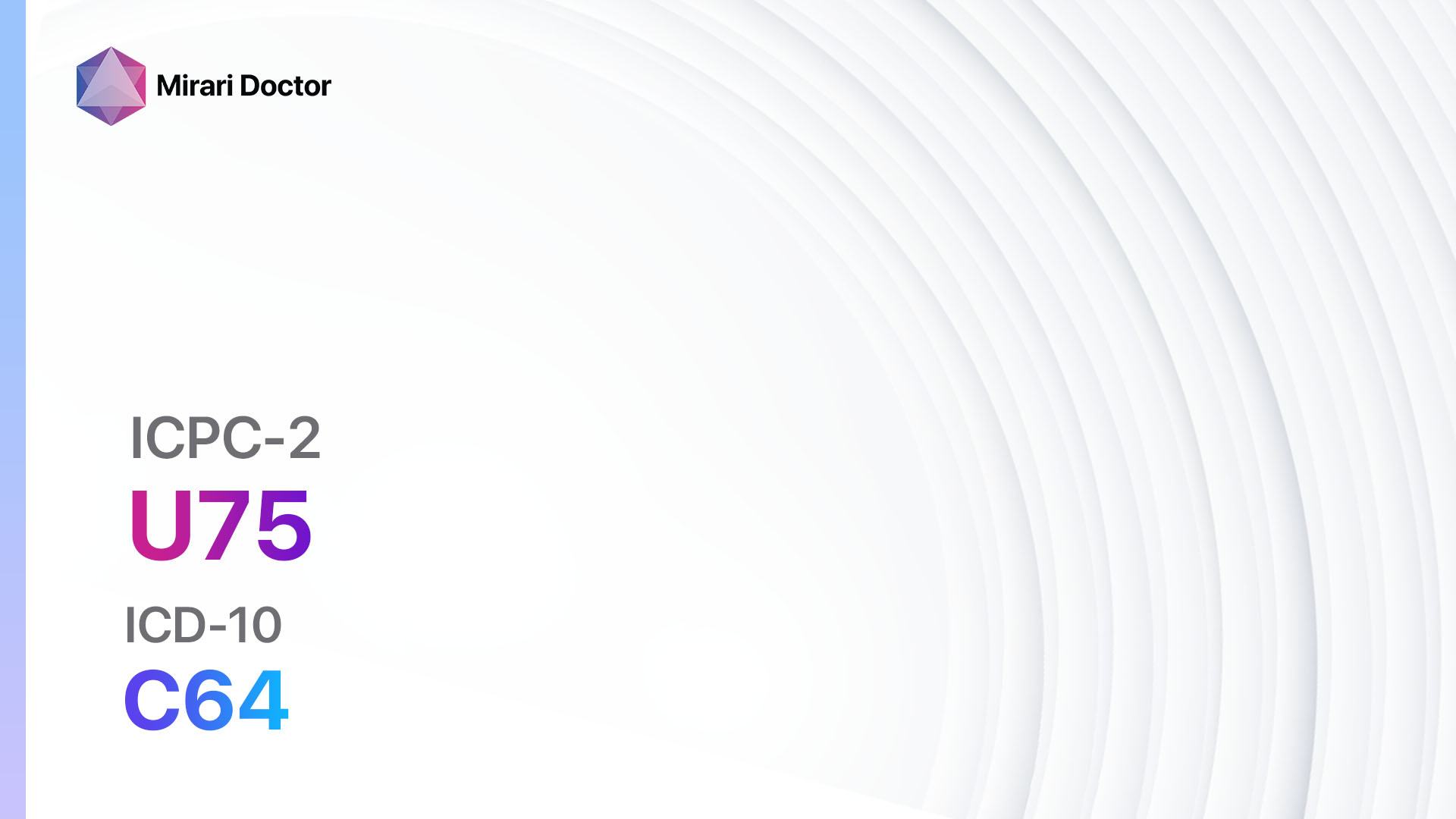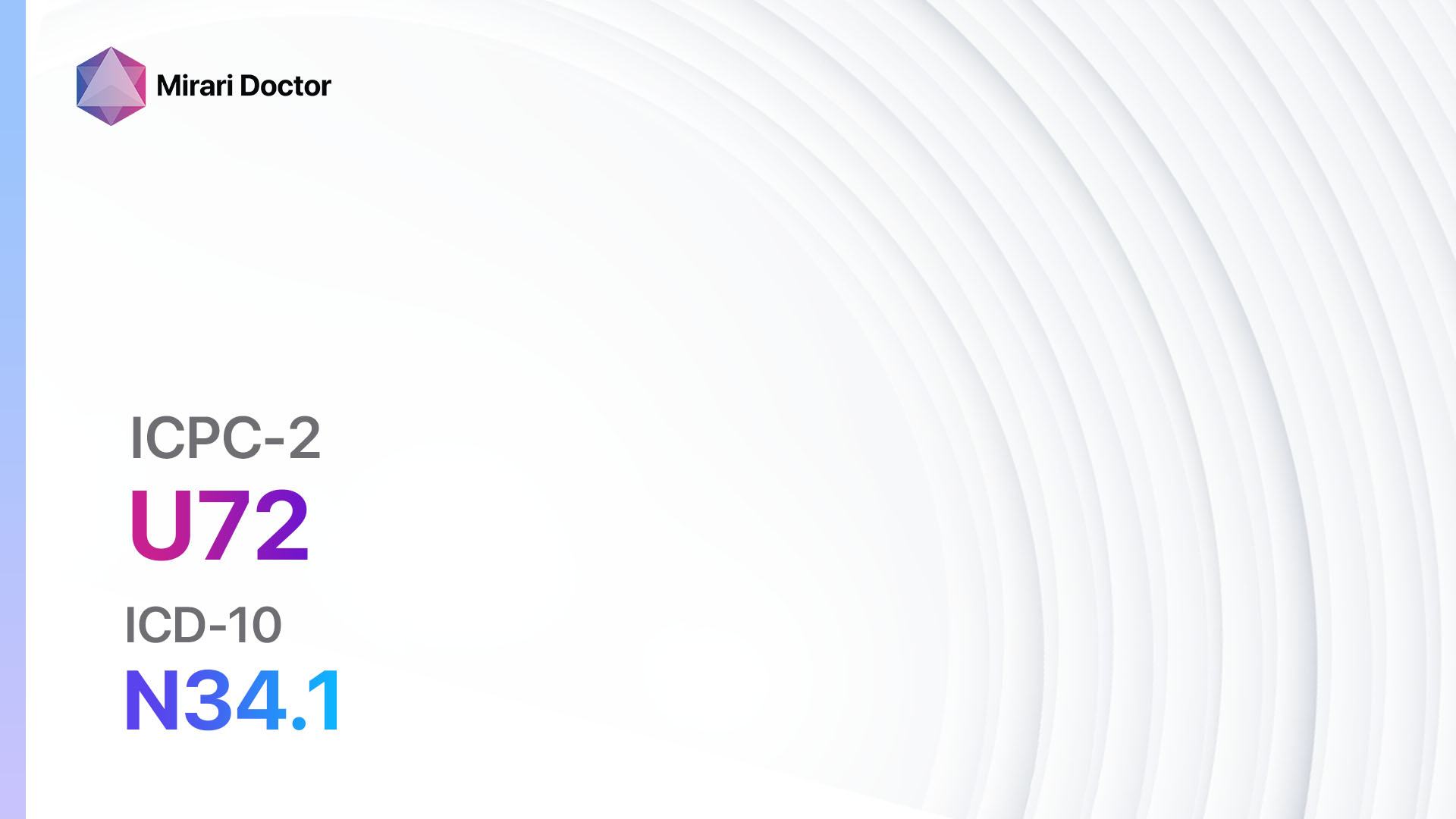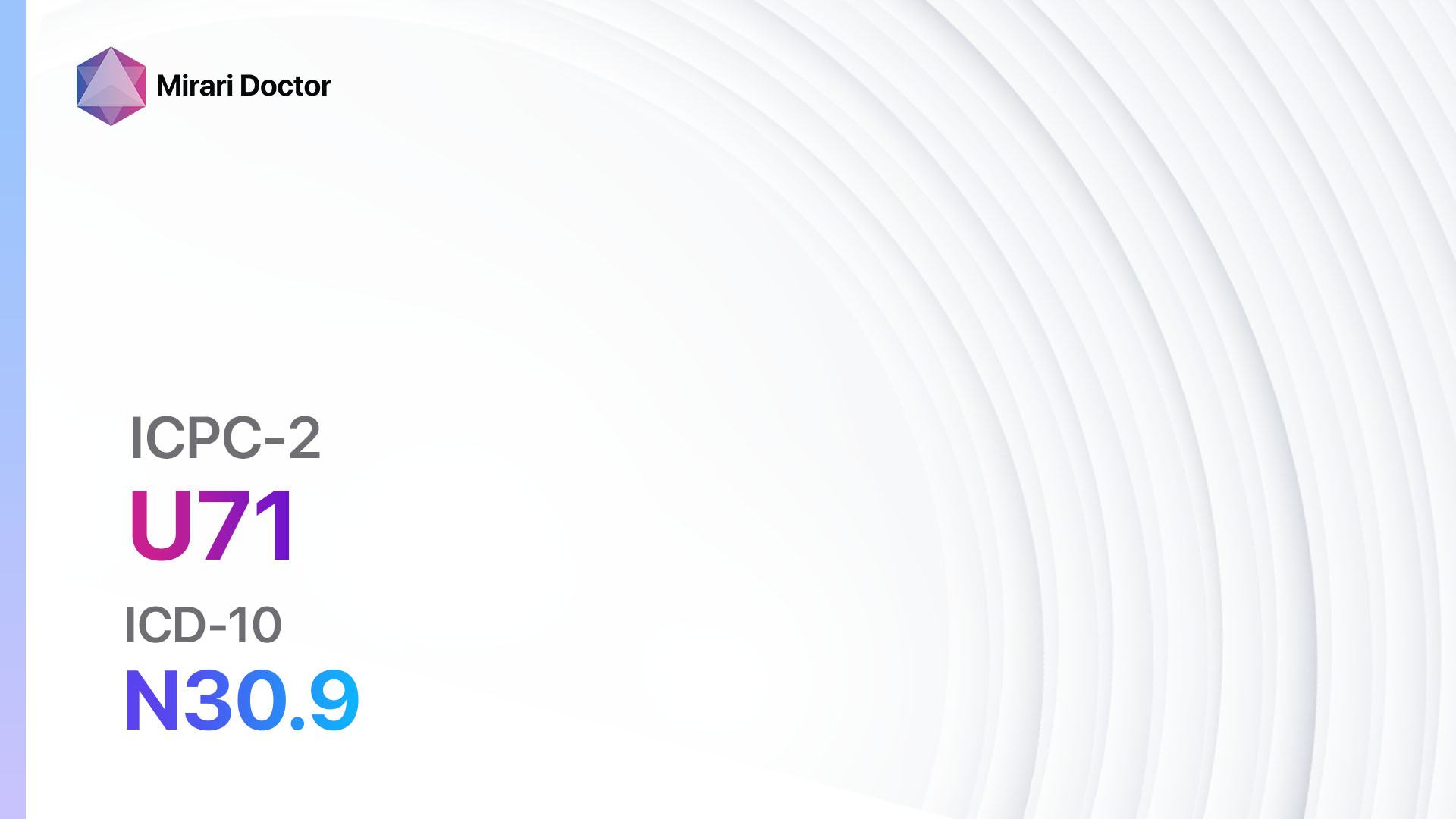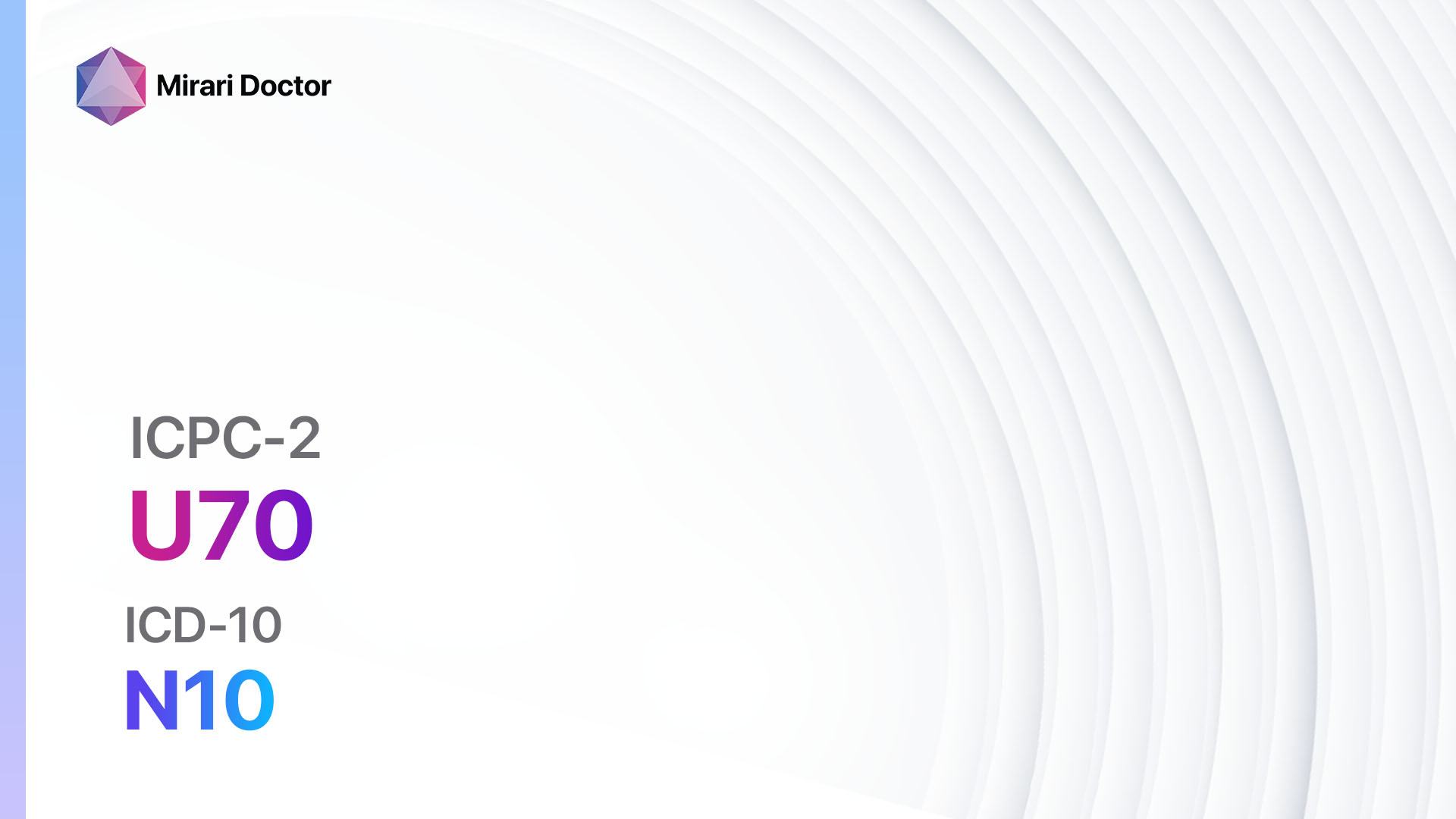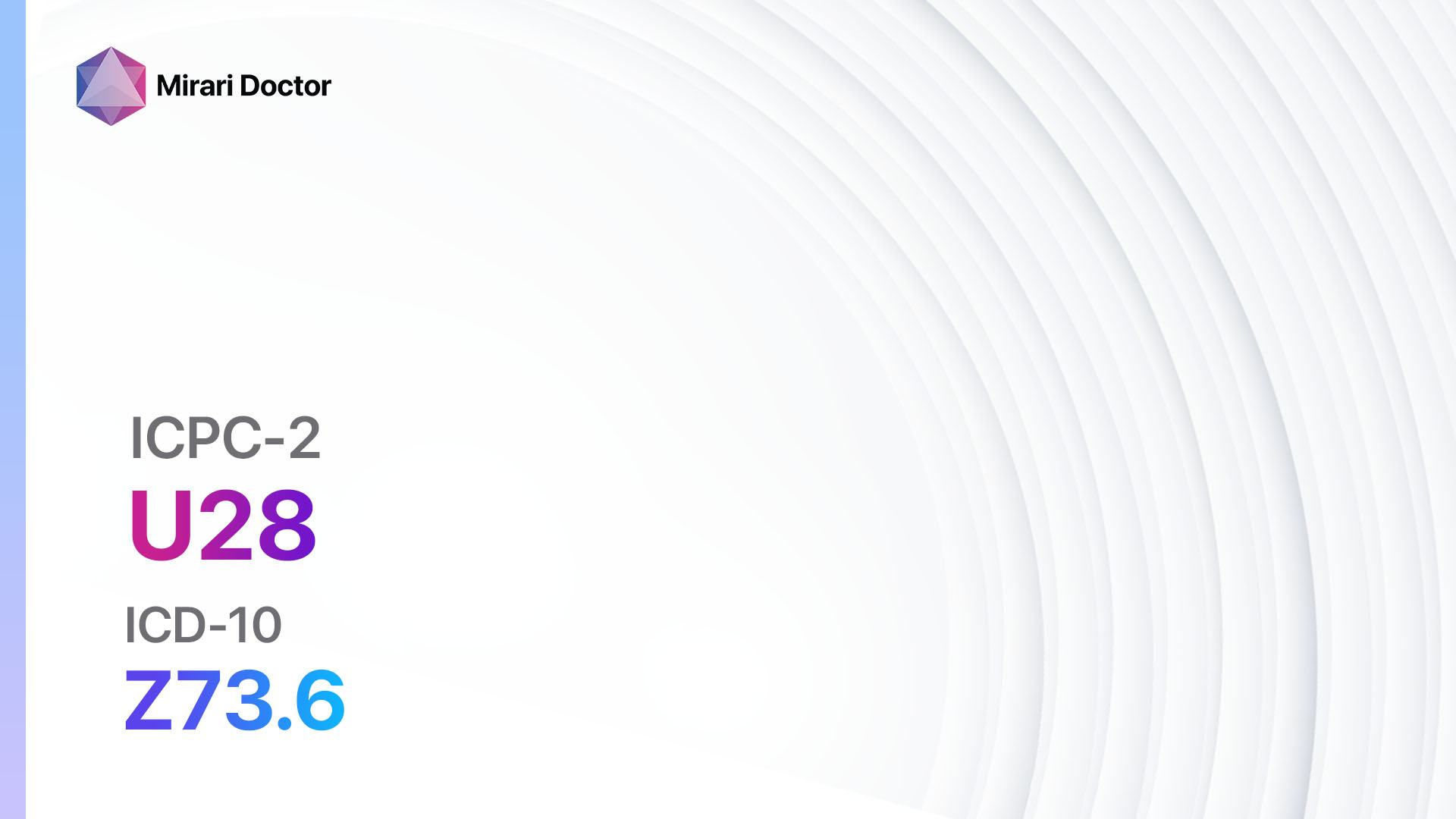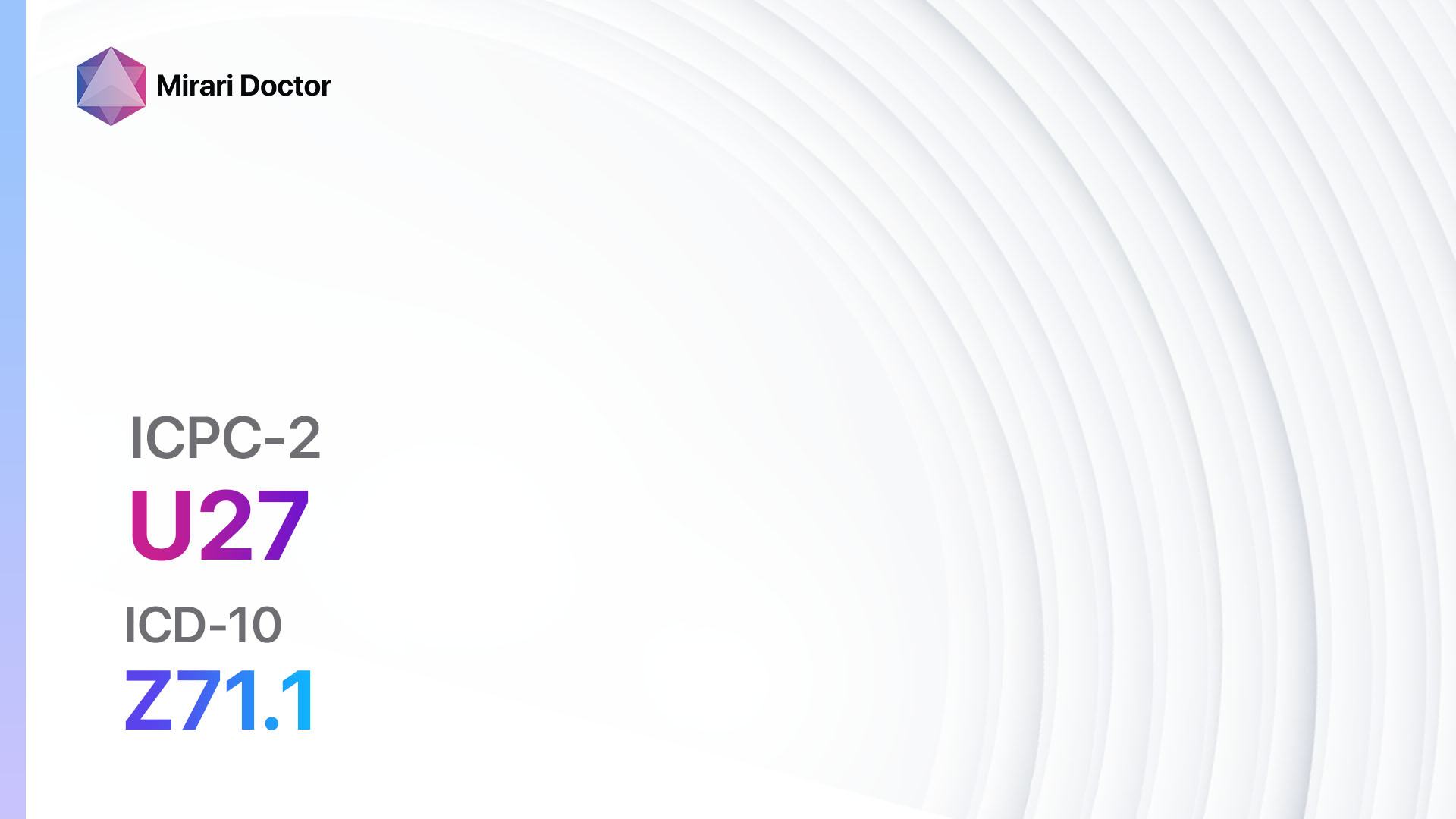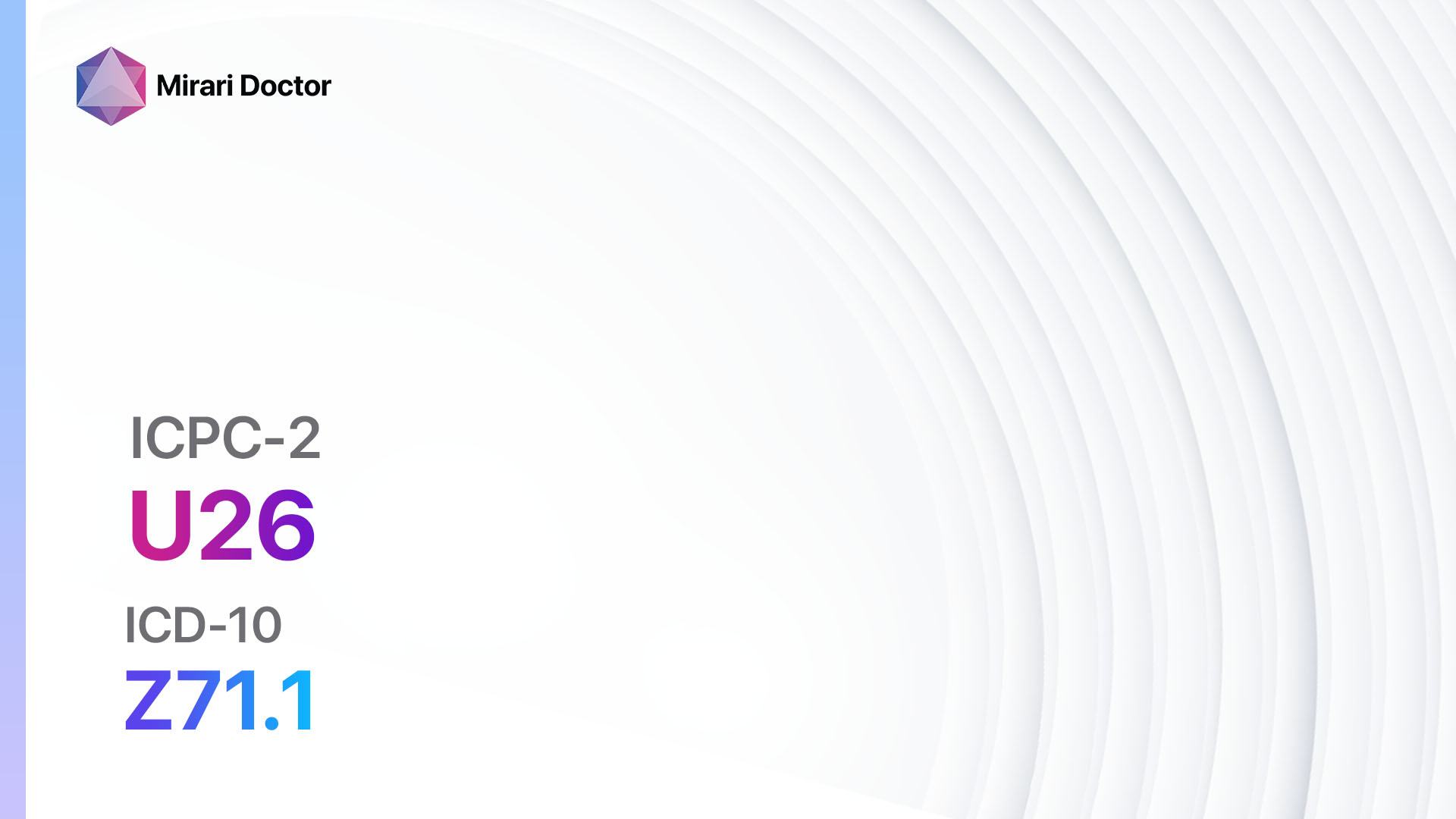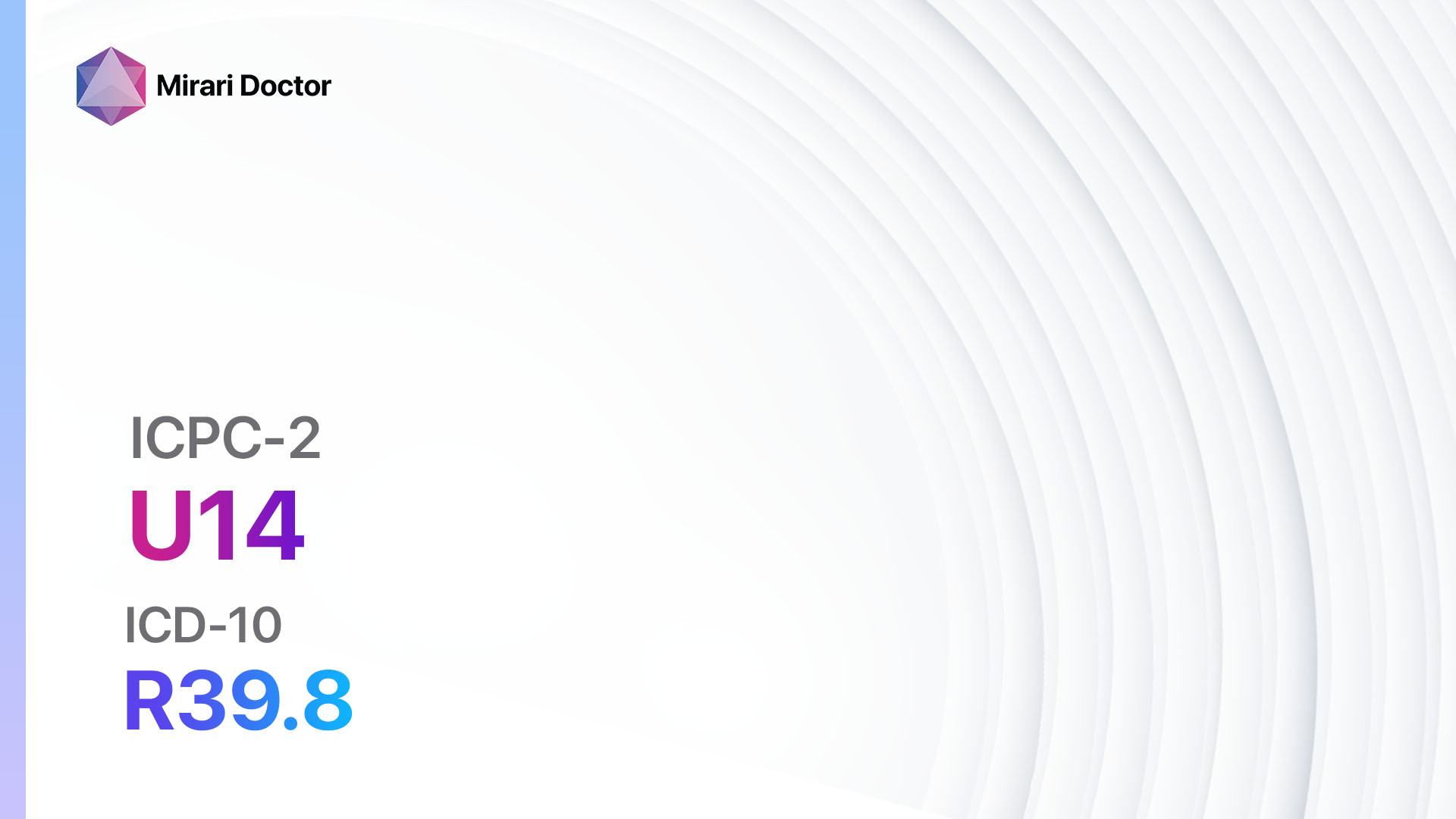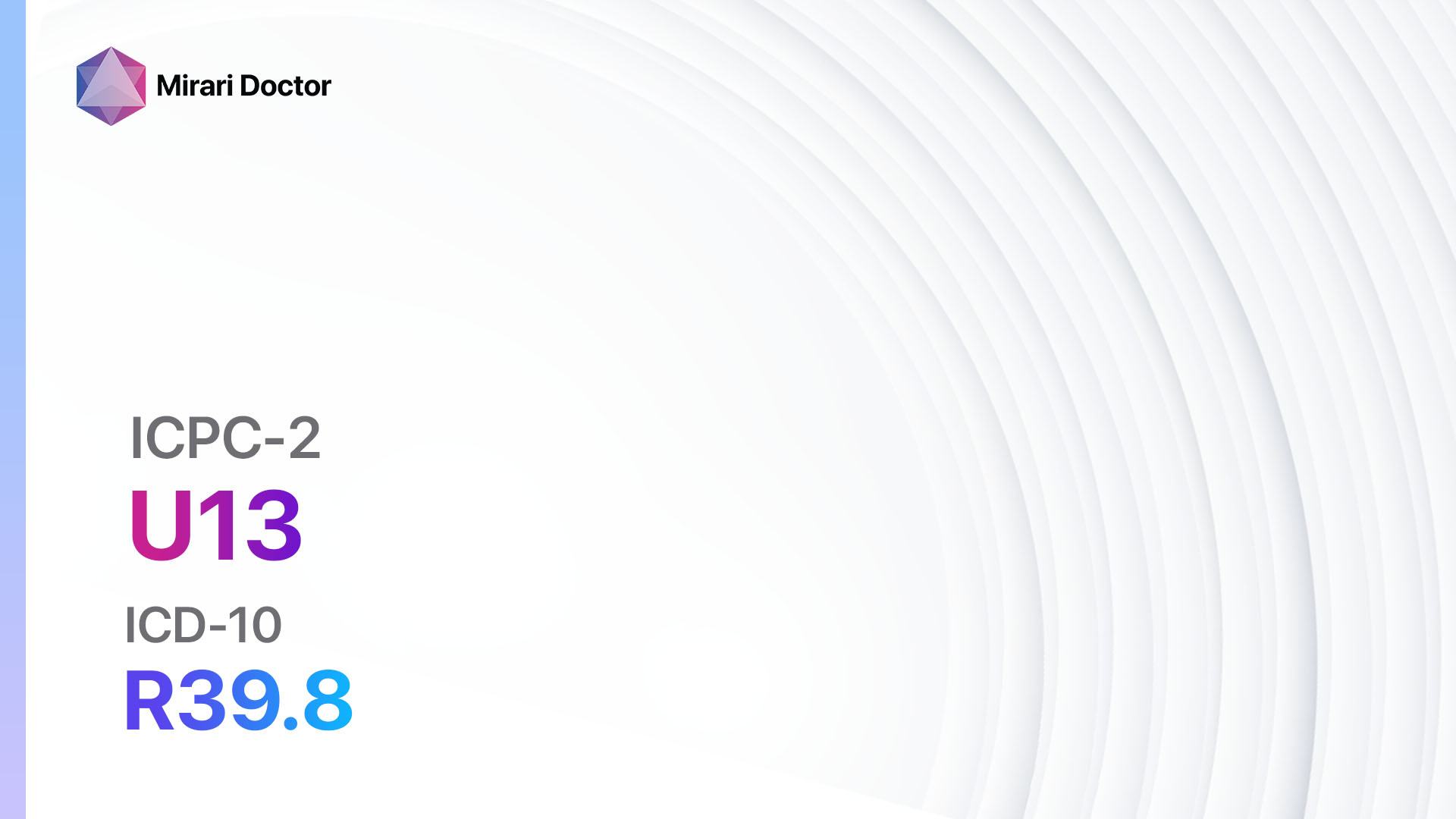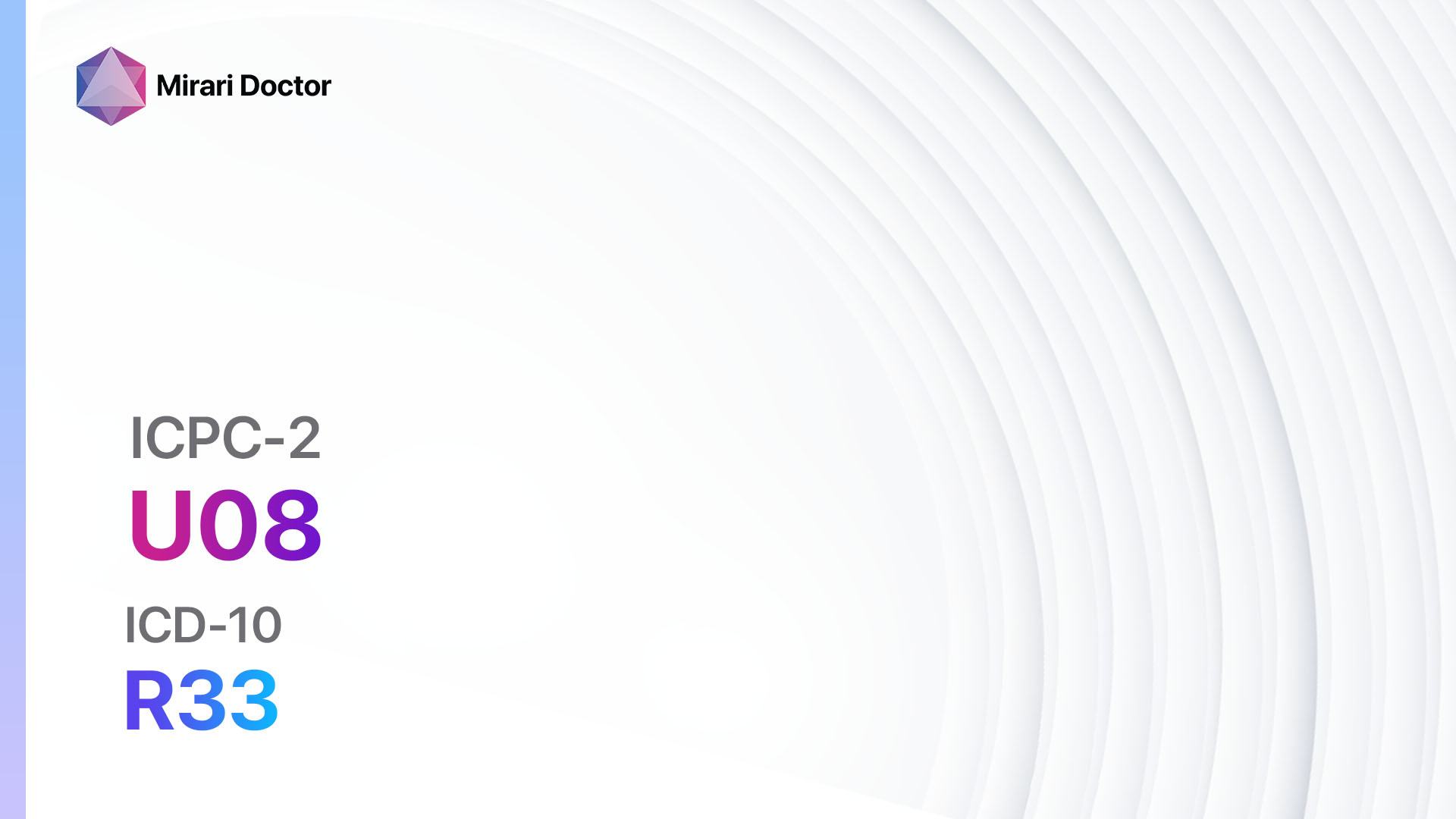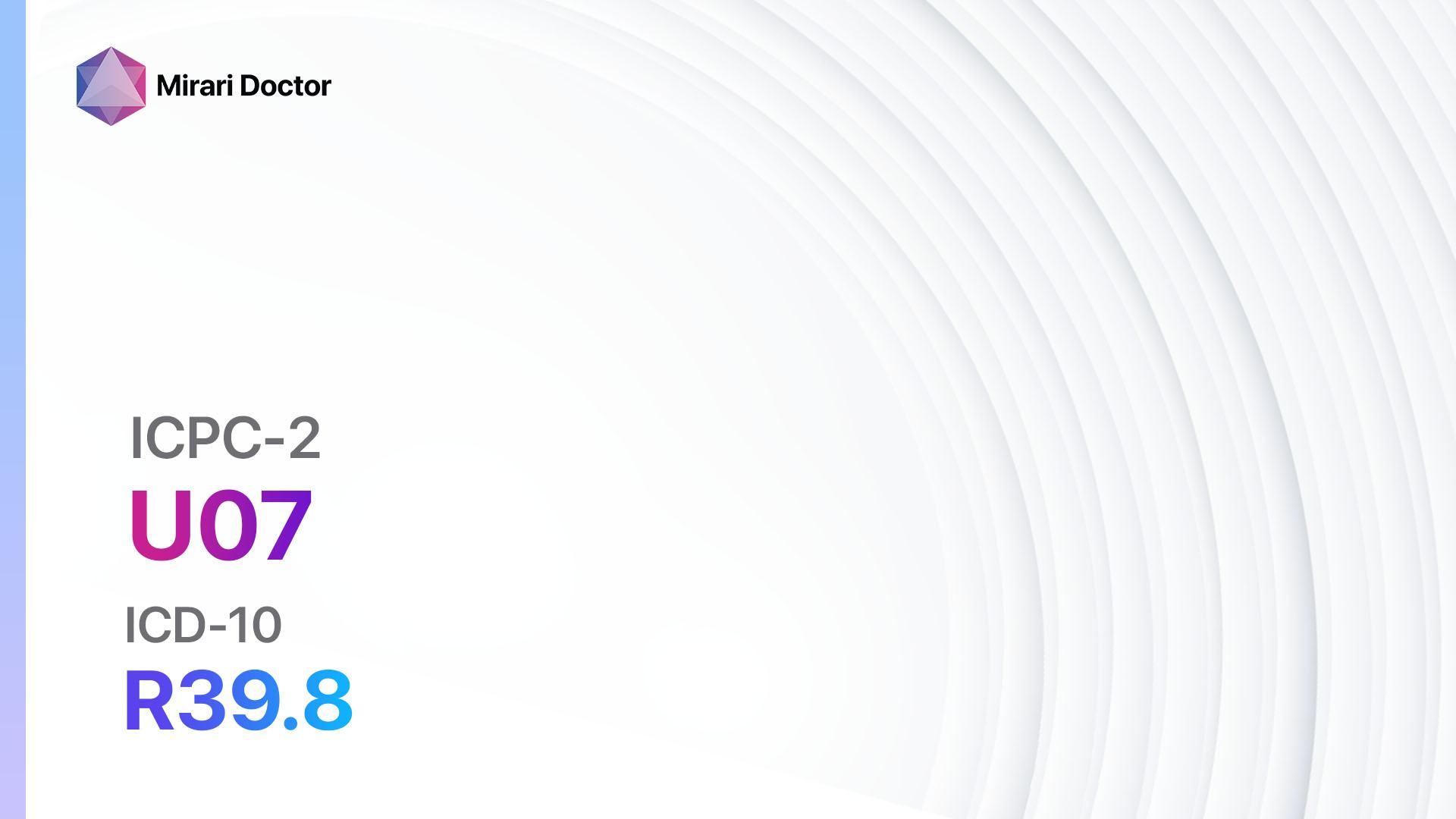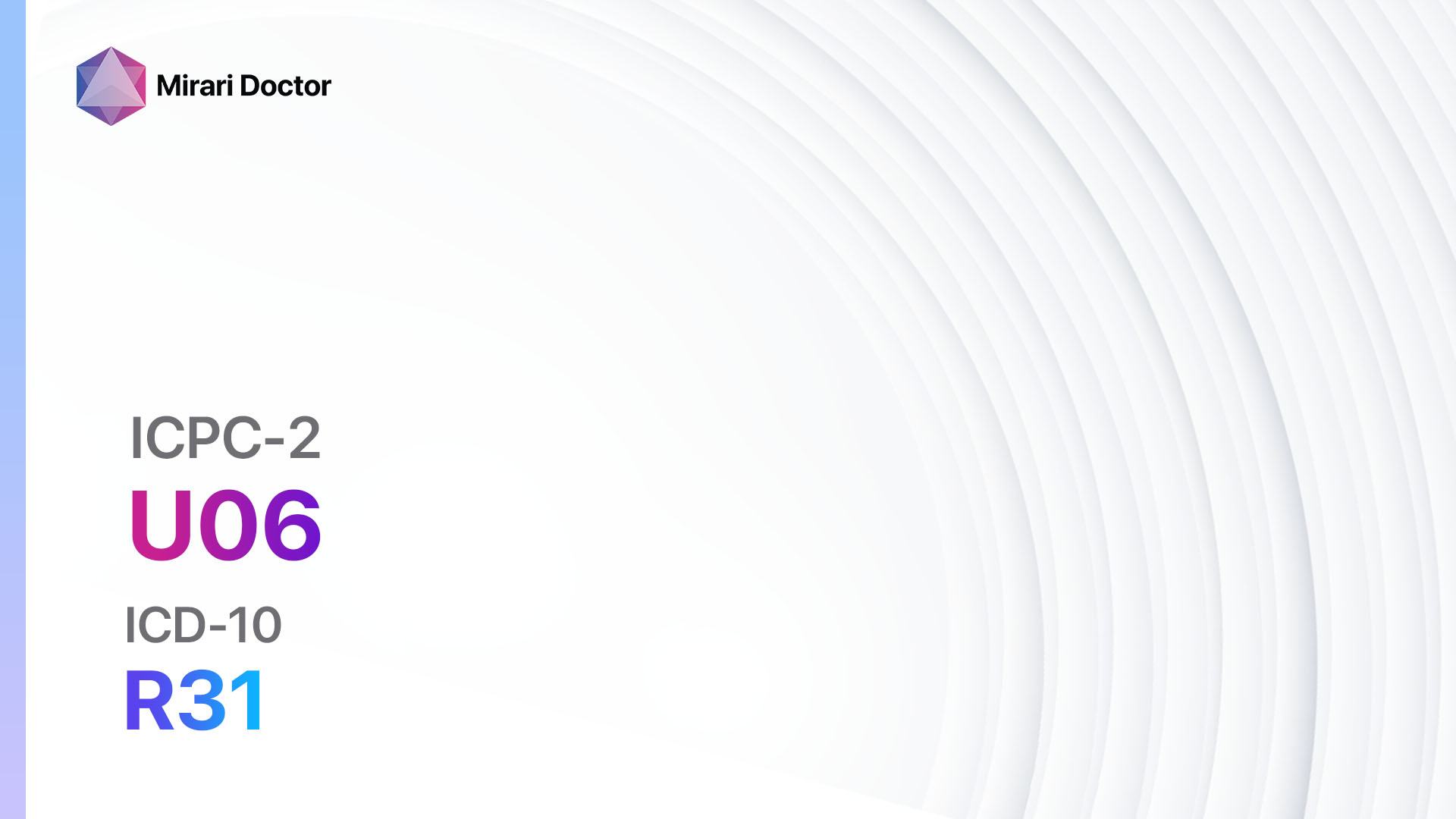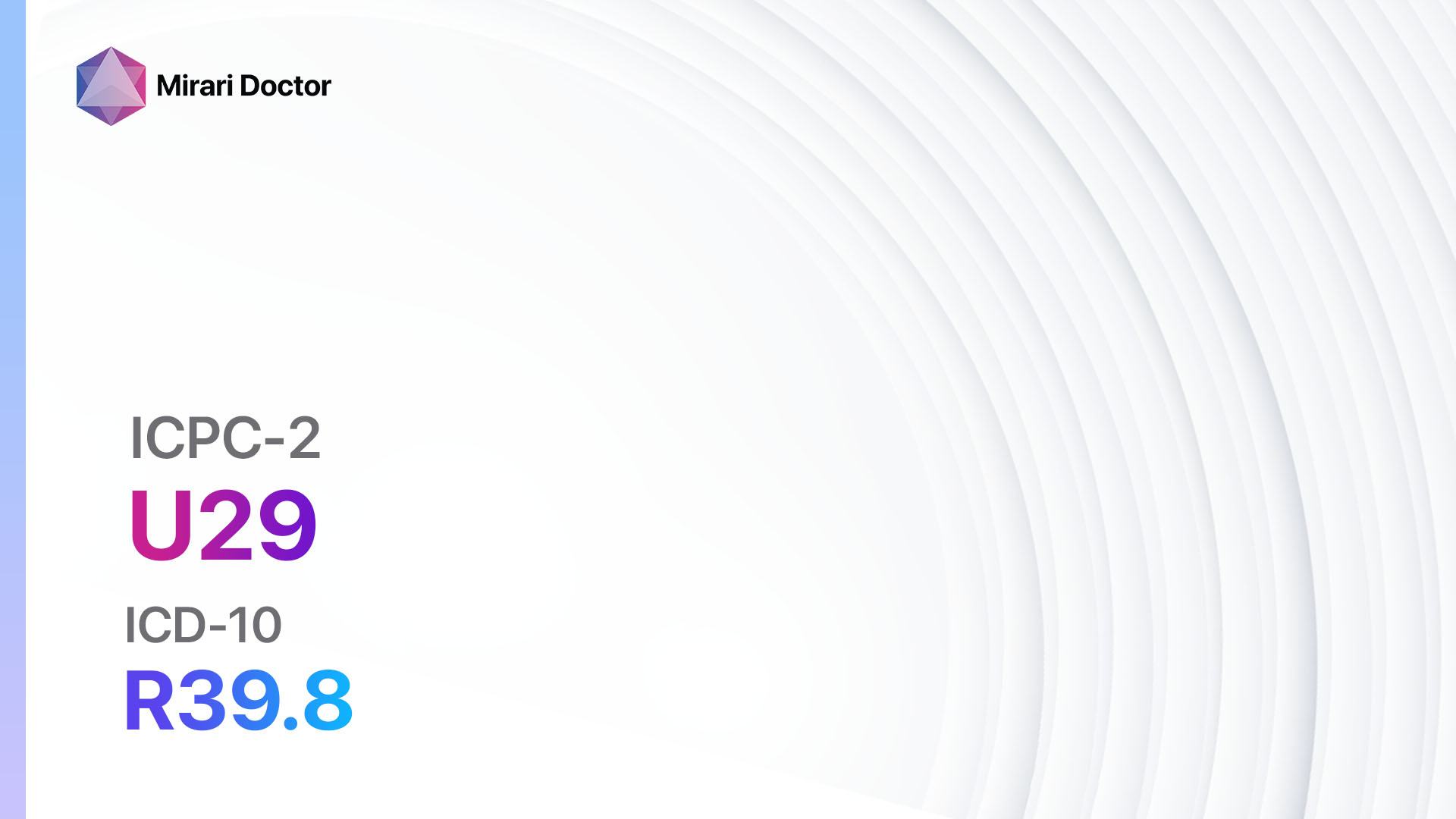
Introduction
Urinary symptoms or complaints can be indicative of various underlying conditions. This guide aims to provide a comprehensive overview of the diagnostic steps and possible interventions for urinary symptom/complaint other (ICPC-2: U29).
Codes
- ICPC-2 Code: U29 Urinary symptom/complaint other
- ICD-10 Code: R39.8 Other specified symptoms and signs involving the urinary system
Symptoms
- Frequent urination: Increased frequency of urination, often accompanied by a sense of urgency.
- Urinary incontinence: Involuntary leakage of urine.
- Nocturia: Frequent urination during the night.
- Dysuria: Pain or discomfort during urination.
- Hematuria: Presence of blood in the urine.
- Urinary retention: Inability to completely empty the bladder.
- Urinary urgency: Sudden and strong urge to urinate[1].
Causes
- Urinary tract infection (UTI): Bacterial infection in the urinary tract.
- Bladder or kidney stones: Hard deposits that form in the bladder or kidneys.
- Urinary tract obstruction: Blockage in the urinary tract, often caused by an enlarged prostate or tumors.
- Bladder or kidney infection: Infection in the bladder or kidneys.
- Interstitial cystitis: Chronic inflammation of the bladder.
- Urinary incontinence: Weak or overactive bladder muscles.
- Prostatitis: Inflammation of the prostate gland.
- Urethritis: Inflammation of the urethra.
- Neurological disorders: Conditions that affect the nerves controlling the bladder[2].
Diagnostic Steps
Medical History
- Gather information about the patient’s urinary symptoms, including frequency, urgency, pain, and presence of blood.
- Inquire about any previous urinary tract infections or kidney stones.
- Assess the patient’s medical history, including any underlying conditions such as diabetes or neurological disorders.
- Ask about medications the patient is currently taking, as some may contribute to urinary symptoms.
- Determine if there are any lifestyle factors that may be contributing to the symptoms, such as excessive caffeine or alcohol consumption[3].
Physical Examination
- Perform a general physical examination to assess overall health.
- Conduct a focused examination of the abdomen and pelvic region to check for any abnormalities or tenderness.
- Evaluate the external genitalia for signs of infection or inflammation.
- Palpate the bladder to assess for distention or tenderness.
- Perform a digital rectal examination in male patients to assess the prostate gland[4].
Laboratory Tests
- Urinalysis: Analyze a urine sample for the presence of infection, blood, or other abnormalities.
- Urine culture: Identify the specific bacteria causing a urinary tract infection.
- Blood tests: Assess kidney function and check for any underlying conditions such as diabetes or kidney disease.
- Cystoscopy: Insert a thin tube with a camera into the urethra and bladder to visualize the urinary tract and check for any abnormalities.
- Urodynamic testing: Measure bladder and urethral function to evaluate urinary incontinence or other bladder dysfunctions[6].
Diagnostic Imaging
- Ultrasound: Use sound waves to create images of the urinary tract, allowing visualization of the kidneys, bladder, and ureters.
- CT scan: Provide detailed cross-sectional images of the urinary tract, useful for detecting kidney stones or other structural abnormalities.
- MRI: Use magnetic fields and radio waves to generate images of the urinary tract, providing detailed information about the kidneys, bladder, and surrounding structures.
- X-ray: Can be used to detect kidney stones or other calcifications in the urinary tract[7].
Other Tests
- Uroflowmetry: Measure the rate and volume of urine flow to assess for any abnormalities in voiding.
- Post-void residual measurement: Determine the amount of urine left in the bladder after voiding, which can indicate urinary retention.
- Video urodynamics: Combine urodynamic testing with fluoroscopy to evaluate bladder and urethral function during filling and voiding[8].
Follow-up and Patient Education
- Schedule follow-up appointments to monitor the effectiveness of interventions and adjust treatment as necessary.
- Provide education on lifestyle modifications, such as reducing caffeine and alcohol intake, maintaining a healthy weight, and practicing pelvic floor exercises.
- Discuss the importance of good hygiene and proper wiping techniques to prevent urinary tract infections.
- Address any concerns or questions the patient may have regarding their condition or treatment[9][10].
Possible Interventions
Traditional Interventions
Medications:
Top 5 drugs for urinary symptom/complaint other:
- Antibiotics (e.g., Ciprofloxacin, Nitrofurantoin):
- Cost: Generic versions can range from $3 to $50 per month.
- Contraindications: Hypersensitivity to the medication.
- Side effects: Nausea, diarrhea, allergic reactions.
- Severe side effects: Tendon rupture, severe allergic reactions.
- Drug interactions: Warfarin, antacids containing magnesium or aluminum.
- Warning: Finish the full course of antibiotics as prescribed.
- Alpha-blockers (e.g., Tamsulosin, Alfuzosin):
- Cost: Generic versions can range from $10 to $50 per month.
- Contraindications: Hypersensitivity to the medication, severe liver disease.
- Side effects: Dizziness, low blood pressure, retrograde ejaculation.
- Severe side effects: Priapism (prolonged erection), allergic reactions.
- Drug interactions: Other alpha-blockers, nitrates.
- Warning: Take medication as prescribed and avoid sudden position changes.
- Anticholinergic medications (e.g., Oxybutynin, Tolterodine):
- Cost: Generic versions can range from $10 to $50 per month.
- Contraindications: Urinary retention, gastric retention, narrow-angle glaucoma.
- Side effects: Dry mouth, constipation, blurred vision.
- Severe side effects: Urinary retention, hallucinations.
- Drug interactions: Other anticholinergic medications, certain antidepressants.
- Warning: Avoid activities requiring mental alertness until the effects are known.
- Pain relievers (e.g., Phenazopyridine):
- Cost: Generic versions can range from $10 to $30 per month.
- Contraindications: Severe kidney disease, liver disease.
- Side effects: Orange discoloration of urine, stomach upset.
- Severe side effects: Allergic reactions, methemoglobinemia (rare).
- Drug interactions: None reported.
- Warning: Do not use for more than 2 days without medical supervision.
- Muscle relaxants (e.g., Baclofen, Methocarbamol):
- Cost: Generic versions can range from $10 to $50 per month.
- Contraindications: Hypersensitivity to the medication, history of seizures.
- Side effects: Drowsiness, dizziness, weakness.
- Severe side effects: Hallucinations, severe allergic reactions.
- Drug interactions: Other muscle relaxants, sedatives.
- Warning: Avoid driving or operating heavy machinery while taking these medications.
Alternative Drugs:
- Botulinum toxin injections: Can be used to treat overactive bladder by relaxing the bladder muscles. Cost: $500 to $1500 per injection.
- Hormone replacement therapy: May be beneficial for postmenopausal women experiencing urinary symptoms. Cost: Varies depending on the specific hormone therapy regimen.
- Tricyclic antidepressants: Can help relieve urinary symptoms by relaxing the bladder muscles. Cost: Generic versions can range from $10 to $50 per month.
- Immunosuppressants: Used in certain cases of interstitial cystitis to reduce inflammation. Cost: Varies depending on the specific medication and dosage.
Surgical Procedures:
- Transurethral resection of the prostate (TURP): Remove excess prostate tissue that is causing urinary obstruction. Cost: $10,000 to $15,000.
- Bladder augmentation: Increase the capacity of the bladder by using a segment of the intestine. Cost: $15,000 to $30,000.
- Urinary diversion: Create a new way for urine to exit the body when the bladder is not functional. Cost: $20,000 to $50,000.
Alternative Interventions
- Acupuncture: May help improve urinary symptoms by promoting relaxation and reducing inflammation. Cost: $60 to $120 per session.
- Herbal supplements: Certain herbs, such as cranberry extract or saw palmetto, may have potential benefits for urinary symptoms. Cost: Varies depending on the specific supplement.
- Pelvic floor exercises: Strengthening the pelvic floor muscles can help improve bladder control. Cost: Free.
- Biofeedback: Teaches patients to control their pelvic floor muscles through visual or auditory feedback. Cost: $50 to $100 per session.
- Bladder training: Involves gradually increasing the time between bathroom visits to improve bladder capacity. Cost: Free.
Lifestyle Interventions
- Fluid management: Adjusting fluid intake, especially before bedtime, can help reduce nocturia. Cost: Free.
- Dietary modifications: Avoiding bladder irritants such as caffeine, alcohol, and spicy foods may alleviate symptoms. Cost: Varies depending on individual food choices.
- Weight management: Losing weight can reduce pressure on the bladder and improve urinary symptoms. Cost: Varies depending on chosen weight loss method.
- Smoking cessation: Quitting smoking can improve bladder function and reduce the risk of bladder cancer. Cost: Varies depending on chosen smoking cessation method.
- Bladder retraining: Establishing a regular voiding schedule can help improve bladder control. Cost: Free.
It is important to note that the cost ranges provided are approximate and may vary depending on the location and availability of the interventions.
Mirari Cold Plasma Alternative Intervention
Understanding Mirari Cold Plasma
- Safe and Non-Invasive Treatment: Mirari Cold Plasma is a safe and non-invasive treatment option for various skin conditions. It does not require incisions, minimizing the risk of scarring, bleeding, or tissue damage.
- Efficient Extraction of Foreign Bodies: Mirari Cold Plasma facilitates the removal of foreign bodies from the skin by degrading and dissociating organic matter, allowing easier access and extraction.
- Pain Reduction and Comfort: Mirari Cold Plasma has a local analgesic effect, providing pain relief during the treatment, making it more comfortable for the patient.
- Reduced Risk of Infection: Mirari Cold Plasma has antimicrobial properties, effectively killing bacteria and reducing the risk of infection.
- Accelerated Healing and Minimal Scarring: Mirari Cold Plasma stimulates wound healing and tissue regeneration, reducing healing time and minimizing the formation of scars.
Mirari Cold Plasma Prescription
Video instructions for using Mirari Cold Plasma Device – U29 Urinary symptom/complaint other (ICD-10:R39.8)
| Mild | Moderate | Severe |
| Mode setting: 1 (Infection) Location: 2 (Prostate & Uterus) Morning: 15 minutes, Evening: 15 minutes |
Mode setting: 1 (Infection) Location: 2 (Prostate & Uterus) Morning: 30 minutes, Lunch: 30 minutes, Evening: 30 minutes |
Mode setting: 1 (Infection) Location: 2 (Prostate & Uterus) Morning: 30 minutes, Lunch: 30 minutes, Evening: 30 minutes |
| Mode setting: 6 (Liver/Kidney Therapy) Location: 2 (Prostate & Uterus) Morning: 15 minutes, Evening: 15 minutes |
Mode setting: 6 (Liver/Kidney Therapy) Location: 2 (Prostate & Uterus) Morning: 30 minutes, Lunch: 30 minutes, Evening: 30 minutes |
Mode setting: 6 (Liver/Kidney Therapy) Location: 2 (Prostate & Uterus) Morning: 30 minutes, Lunch: 30 minutes, Evening: 30 minutes |
| Mode setting: 6 (Liver/Kidney Therapy) Location: 3 (Kidney, Liver & Spleen) Morning: 15 minutes, Evening: 15 minutes |
Mode setting: 6 (Liver/Kidney Therapy) Location: 3 (Kidney, Liver & Spleen) Morning: 30 minutes, Lunch: 30 minutes, Evening: 30 minutes |
Mode setting: 6 (Liver/Kidney Therapy) Location: 3 (Kidney, Liver & Spleen) Morning: 30 minutes, Lunch: 30 minutes, Evening: 30 minutes |
| Mode setting: 7 (Immunotherapy) Location: 1 (Sacrum) Morning: 15 minutes, Evening: 15 minutes |
Mode setting:7 (Immunotherapy) Location: 1 (Sacrum) Morning: 30 minutes, Lunch: 30 minutes, Evening: 30 minutes |
Mode setting:7 (Immunotherapy) Location: 1 (Sacrum) Morning: 30 minutes, Lunch: 30 minutes, Evening: 30 minutes |
| Total Morning: 60 minutes approx. $10 USD, Evening: 60 minutes approx. $10 USD |
Total Morning: 120 minutes approx. $20 USD, Lunch: 120 minutes approx. $20 USD, Evening: 120 minutes approx. $20 USD, |
Total Morning: 120 minutes approx. $20 USD, Lunch: 120 minutes approx. $20 USD, Evening: 120 minutes approx. $20 USD, |
| Usual treatment for 7-60 days approx. $140 USD – $1200 USD | Usual treatment for 6-8 weeks approx. $2,520 USD – $3,360 USD |
Usual treatment for 3-6 months approx. $5,400 USD – $10,800 USD
|
 |
|
Use the Mirari Cold Plasma device to treat Urinary symptom/complaint other effectively.
WARNING: MIRARI COLD PLASMA IS DESIGNED FOR THE HUMAN BODY WITHOUT ANY ARTIFICIAL OR THIRD PARTY PRODUCTS. USE OF OTHER PRODUCTS IN COMBINATION WITH MIRARI COLD PLASMA MAY CAUSE UNPREDICTABLE EFFECTS, HARM OR INJURY. PLEASE CONSULT A MEDICAL PROFESSIONAL BEFORE COMBINING ANY OTHER PRODUCTS WITH USE OF MIRARI.
Step 1: Cleanse the Skin
- Start by cleaning the affected area of the skin with a gentle cleanser or mild soap and water. Gently pat the area dry with a clean towel.
Step 2: Prepare the Mirari Cold Plasma device
- Ensure that the Mirari Cold Plasma device is fully charged or has fresh batteries as per the manufacturer’s instructions. Make sure the device is clean and in good working condition.
- Switch on the Mirari device using the power button or by following the specific instructions provided with the device.
- Some Mirari devices may have adjustable settings for intensity or treatment duration. Follow the manufacturer’s instructions to select the appropriate settings based on your needs and the recommended guidelines.
Step 3: Apply the Device
- Place the Mirari device in direct contact with the affected area of the skin. Gently glide or hold the device over the skin surface, ensuring even coverage of the area experiencing.
- Slowly move the Mirari device in a circular motion or follow a specific pattern as indicated in the user manual. This helps ensure thorough treatment coverage.
Step 4: Monitor and Assess:
- Keep track of your progress and evaluate the effectiveness of the Mirari device in managing your Urinary symptom/complaint other. If you have any concerns or notice any adverse reactions, consult with your health care professional.
Note
This guide is for informational purposes only and should not replace the advice of a medical professional. Always consult with your healthcare provider or a qualified medical professional for personal advice, diagnosis, or treatment. Do not solely rely on the information presented here for decisions about your health. Use of this information is at your own risk. The authors of this guide, nor any associated entities or platforms, are not responsible for any potential adverse effects or outcomes based on the content.
Mirari Cold Plasma System Disclaimer
- Purpose: The Mirari Cold Plasma System is a Class 2 medical device designed for use by trained healthcare professionals. It is registered for use in Thailand and Vietnam. It is not intended for use outside of these locations.
- Informational Use: The content and information provided with the device are for educational and informational purposes only. They are not a substitute for professional medical advice or care.
- Variable Outcomes: While the device is approved for specific uses, individual outcomes can differ. We do not assert or guarantee specific medical outcomes.
- Consultation: Prior to utilizing the device or making decisions based on its content, it is essential to consult with a Certified Mirari Tele-Therapist and your medical healthcare provider regarding specific protocols.
- Liability: By using this device, users are acknowledging and accepting all potential risks. Neither the manufacturer nor the distributor will be held accountable for any adverse reactions, injuries, or damages stemming from its use.
- Geographical Availability: This device has received approval for designated purposes by the Thai and Vietnam FDA. As of now, outside of Thailand and Vietnam, the Mirari Cold Plasma System is not available for purchase or use.
References
- Abrams, P., et al. (2002). The standardisation of terminology of lower urinary tract function: report from the Standardisation Sub-committee of the International Continence Society. Neurourology and Urodynamics, 21(2), 167-178.
- Flores-Mireles, A. L., Walker, J. N., Caparon, M., & Hultgren, S. J. (2015). Urinary tract infections: epidemiology, mechanisms of infection and treatment options. Nature Reviews Microbiology, 13(5), 269-284.
- National Institute for Health and Care Excellence. (2022). Urinary tract infection in under 16s: diagnosis and management. NICE guideline [NG224].
- European Association of Urology. (2023). EAU Guidelines on Urological Infections.
- Mayo Clinic. (2023). Urinary incontinence – Diagnosis and treatment.
- Cleveland Clinic. (2023). Urinary Tract Infection (UTI).
- Mayo Clinic. (2023). Urinary tract infection (UTI) – Diagnosis and treatment.
- Nitti, V. W. (2005). Pressure flow urodynamic studies: the gold standard for diagnosing bladder outlet obstruction. Reviews in Urology, 7(Suppl 6), S14.
- Gormley, E. A., et al. (2012). Diagnosis and treatment of overactive bladder (non-neurogenic) in adults: AUA/SUFU guideline. The Journal of Urology, 188(6 Suppl), 2455-2463.
- Lukacz, E. S., Santiago-Lastra, Y., Albo, M. E., & Brubaker, L. (2017). Urinary Incontinence in Women: A Review. JAMA, 318(16), 1592-1604.
Related articles
Made in USA


